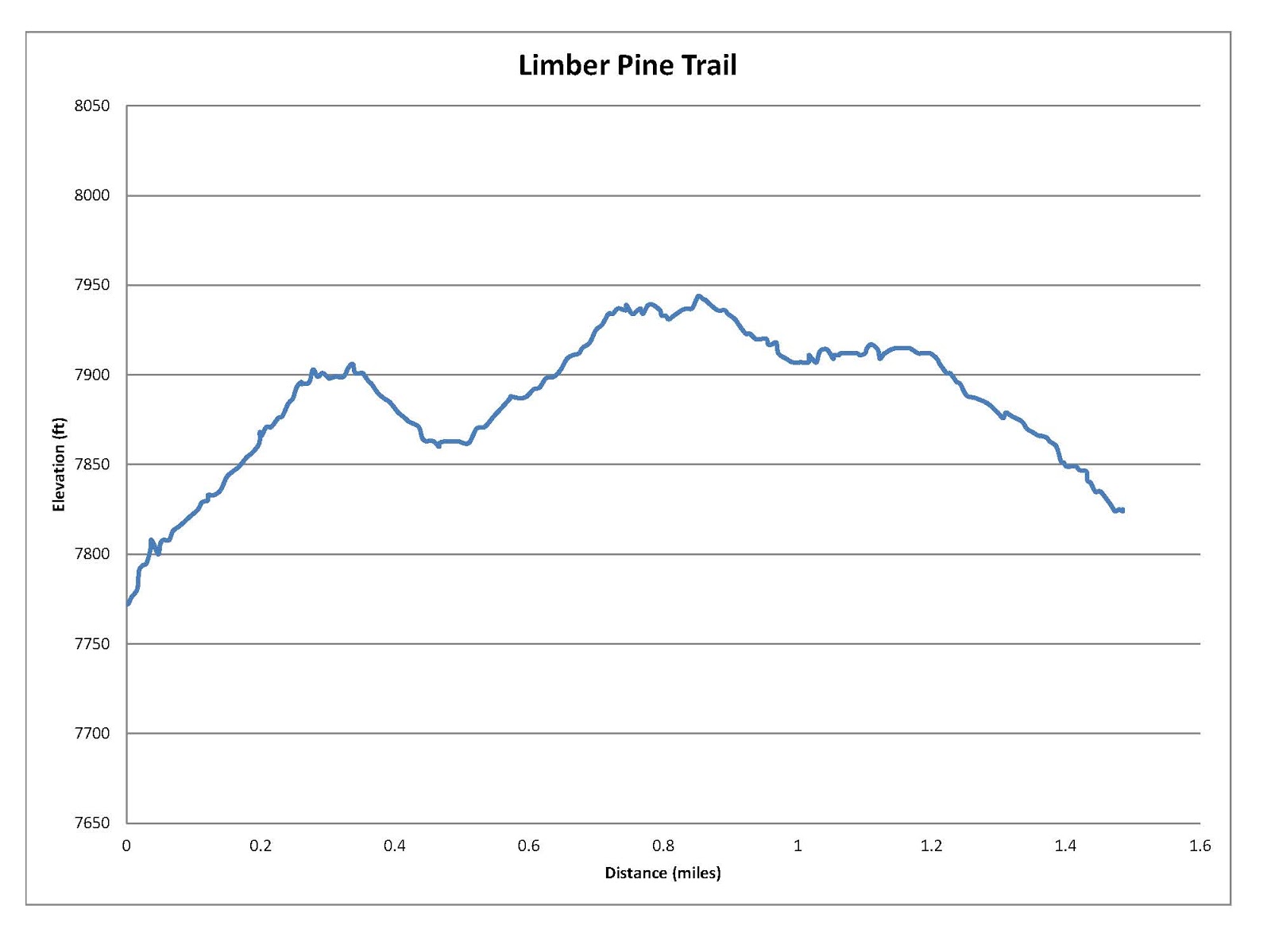This moderate trail is 1.9 miles one way with a 1010 foot elevation change. The trail leads up to the Logan Canyon "Wind Caves," which consist of some limestone arches. Interestingly enough, these arches weren't formed by the wind, but by water seeping through the rocks, eroding away the limestone, and creating underground caverns. Eventually, the Logan river cut away at the rocks, exposing the caverns underneath.
 |
| Topographical Map (Blue=main trail Red=trail to view point) |
 |
| Graph of Elevation (does not include view point section) |
 |
| Trail in Google Earth |
The trail is pretty easy to follow, though there are some "short cuts" and other paths going off in some places. It is important to stay on the main trail to help prevent unnecessary erosion. There are some shallow caves at the point marked by a blue flag in the topographical map. As you near the Wind Caves, there is a turn-off that takes hikers to a nice view point of the caves. If you go to this point and back, it will add 0.1 mile to your total trip.
 |
| Looking at the Wind Caves from the view point |
Visitors can walk through the caves; just beware of the steep cliffs at their edges.
This trail has some shade along the way, though how much really depends on the time of day you hike it. There will be more shade first thing in the morning or later in the day and less during the middle of the day. There are no restroom facilities available at the trailhead or along the trail. Dogs are permitted on the trail as long as they are kept on a leash.
Directions
This trail is located in Cache County up Logan Canyon. If you are coming from Logan, from Main Street turn east onto 400 North.
Continue up 400 N/US-89 for about 7 miles until you reach the trailhead on your left. You will find it near the Guinavah-Malibu Campground.
If you are coming from Bear Lake, you again will follow US-89 up the canyon to the trailhead. The trail from this direction is about 31-32 miles up US-89.














































